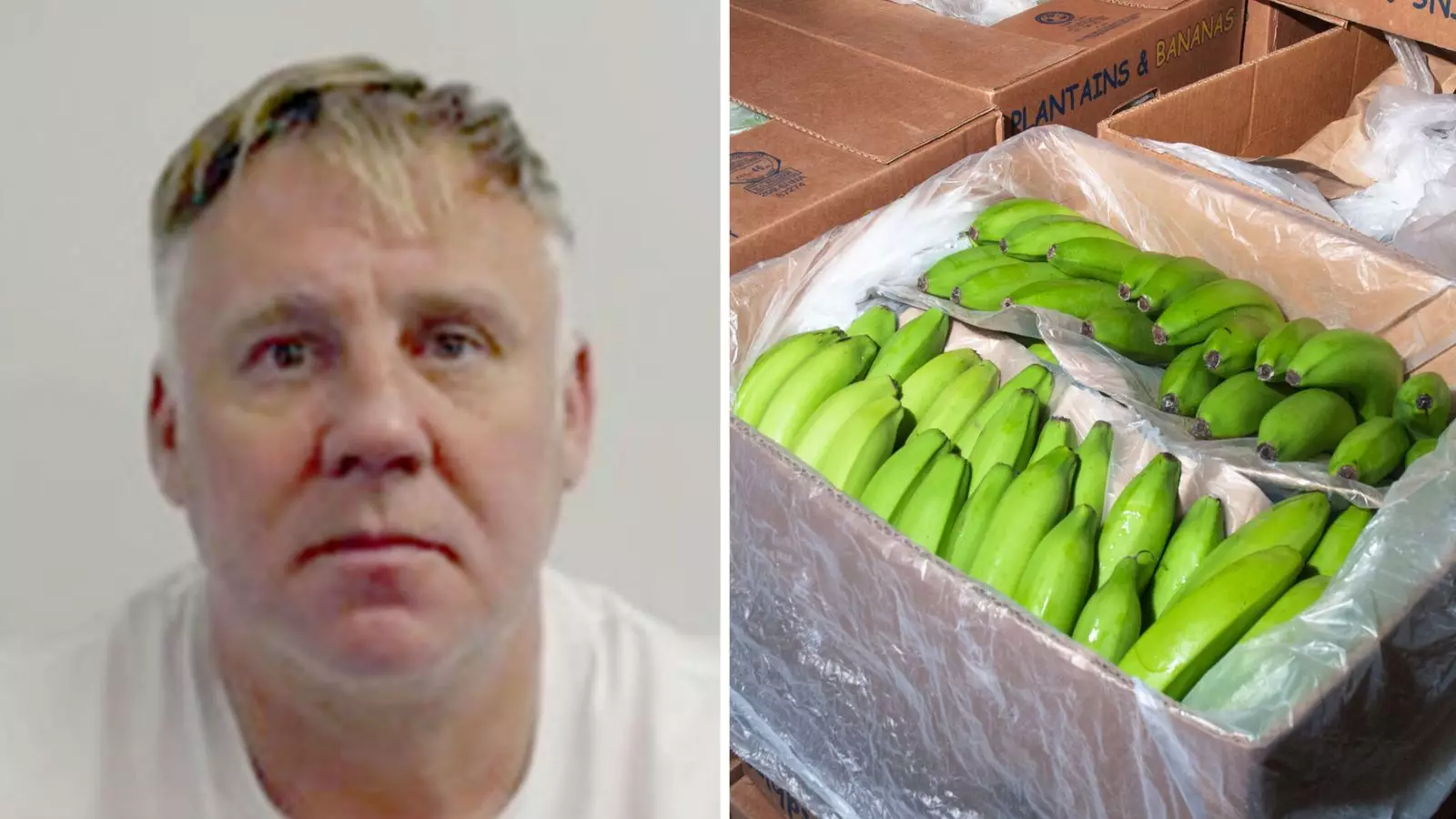The criminal underbelly of the UK saw a significant upheaval with the sentencing of Jamie Stevenson, infamously known as the “Iceman.” This 59-year-old mastermind recently received a 20-year prison sentence for orchestrating a colossal drug smuggling operation that would see nearly a tonne of cocaine transported from South America to Scotland under the guise of a banana shipment. What unfolds in this tale is not merely a story of drugs and deception but also a commentary on the complex mechanisms of organized crime in modern Britain.
Stevenson’s panache for crime was no accident; he was involved in the orchestrated logistics of drug trafficking and production for decades. His recent activities culminated in Operation Pepperoni, a coordinated effort between Police Scotland and the National Crime Agency (NCA) designed to uproot organized crime networks. It was revealed that the cocaine, valued at up to £100 million and comprising 952 blocks concealed beneath 119 foil packages, was intended for a Glasgow fruit merchant, a facade that cleverly masked an extensive drug operation.
Operation Pepperoni was an intricate and well-orchestrated investigation that revealed the extent of Stevenson’s involvement in organized crime. Collaborating with various law enforcement agencies, this operation linked closely to another significant investigation, Operation Venetic. The latter targeted encrypted communications—specifically, the EncroChat platform, which had been compromised by authorities and yielded a trove of information leading to hundreds of arrests across organized crime networks.
The significance of these operations highlights a vital shift in how law enforcement approaches sophisticated criminal organizations. Stevenson’s operation wasn’t merely about drugs; it also illuminated the broader socio-economic realities of crime, as it was discovered that he was also engaged in the production and supply of etizolam, often referred to colloquially as “street valium.”
Stevenson’s involvement in crime dates back to 2007 when he was jailed for money laundering under Operation Folklore—a crackdown utilizing cutting-edge surveillance and forensic accounting to unravel complex criminal activities. Graeme Pearson, who led the Scottish Crime and Drug Enforcement Agency at the time, likened Stevenson’s operations to the notorious tactics of Tony Soprano from the acclaimed series The Sopranos, suggesting that Stevenson managed his criminal empire with similar ruthlessness and strategic cunning.
Notably, the narrative takes a further twist when Stevenson fled the country following the discovery of an etizolam pill factory in Kent. During his time on the lam, law enforcement authorities continued their investigation into the smuggled cocaine, which ultimately culminated in a high-stakes apprehension. Arrested while jogging in the Netherlands, Stevenson was extradited back to the UK, underscoring the lengths to which he had gone to escape justice.
The intricate web of crime tangled further with the involvement of several co-defendants, who, alongside Stevenson, were implicated in serious organized crime and drug offenses. Paul Bowes, 53, for instance, admitted to participating in the production and supply of etizolam and received a six-year prison sentence. Others, including David Bilsland and Gerard Carbin, also faced substantial prison terms for their roles in this expansive drug network.
The sentencing outcomes reflect a judicial system determined to combat organized crime but also reveal the pervasive nature of these networks within society. Each sentence illustrates the broader impact of Stevenson’s endeavors, where multiple lives were affected, and various communities had to grapple with the consequences of drug trafficking.
While Jamie Stevenson’s conviction and sentencing mark a significant victory for law enforcement, it also raises questions about the future landscape of organized crime in the UK. As criminal organizations adapt and evolve, so too must the strategies of law enforcement. The saga of the “Iceman” serves as a stark reminder of the complexities of drug trafficking, the allure of crime, and the relentless pursuit of justice—whereas one chapter ends, a new one may very well begin. Thus, the battle against organized crime is ongoing, with Stevenson’s fall illuminating both the shadows of the past and the uncertainties of the future.


Leave a Reply